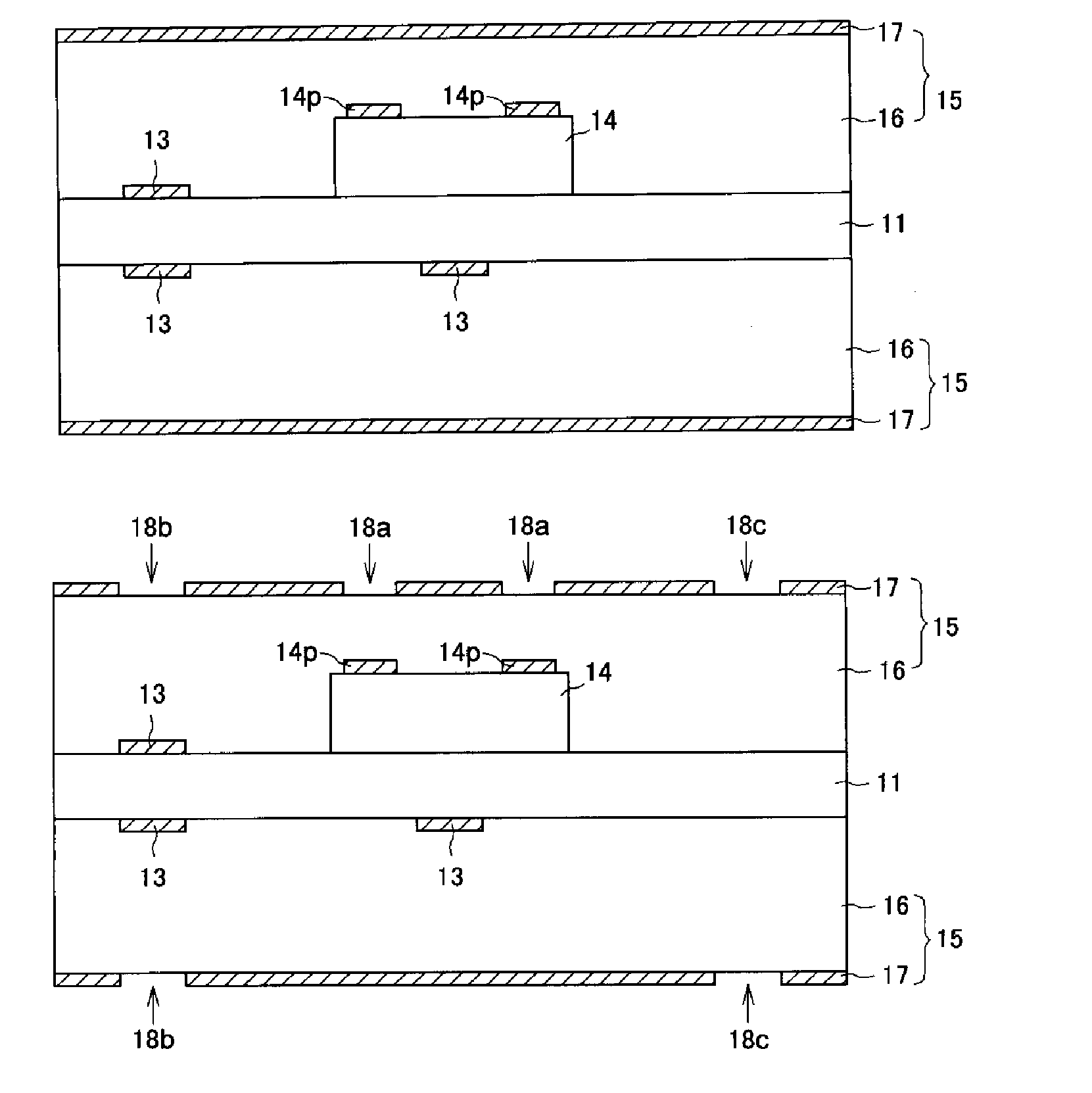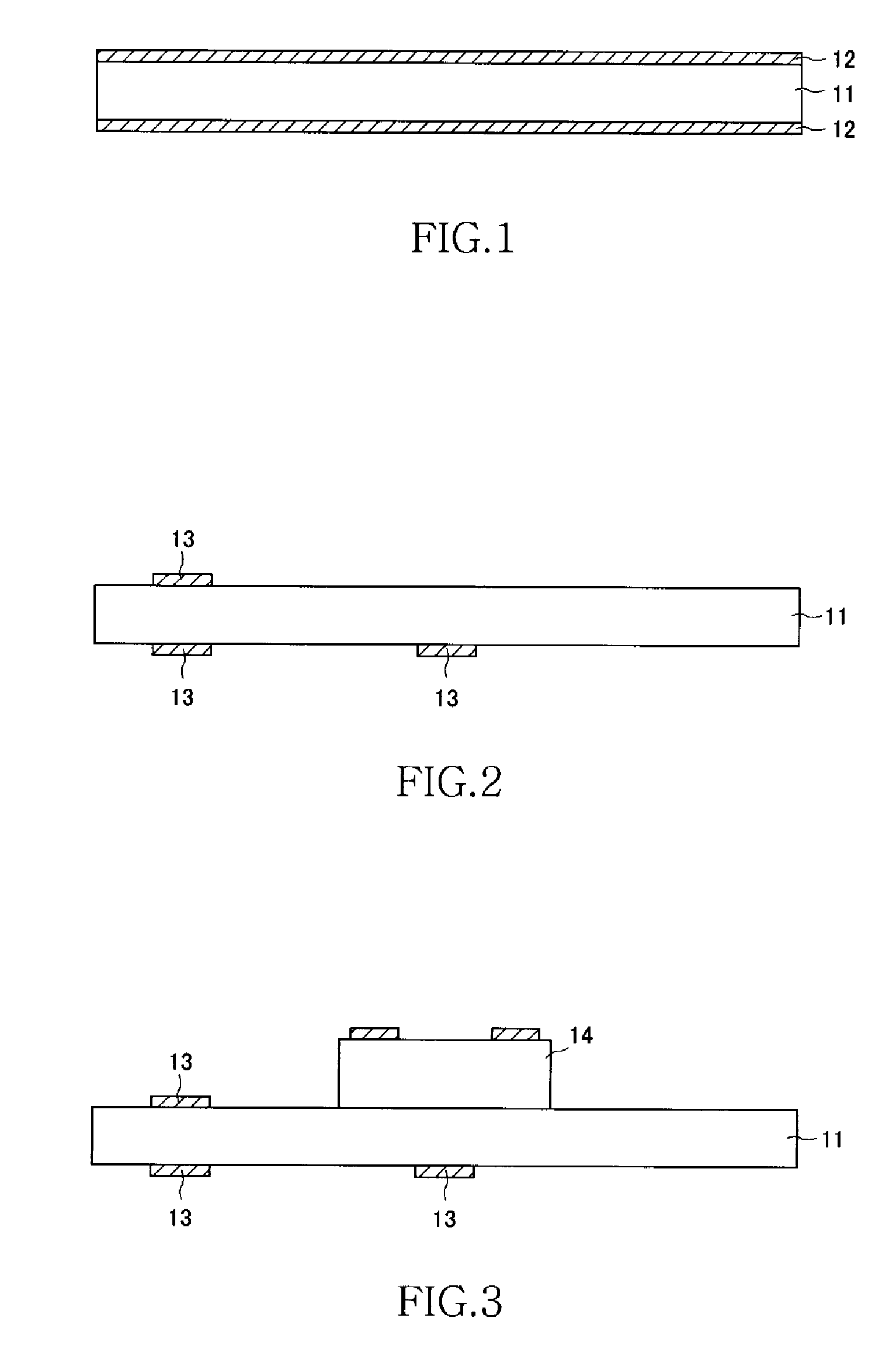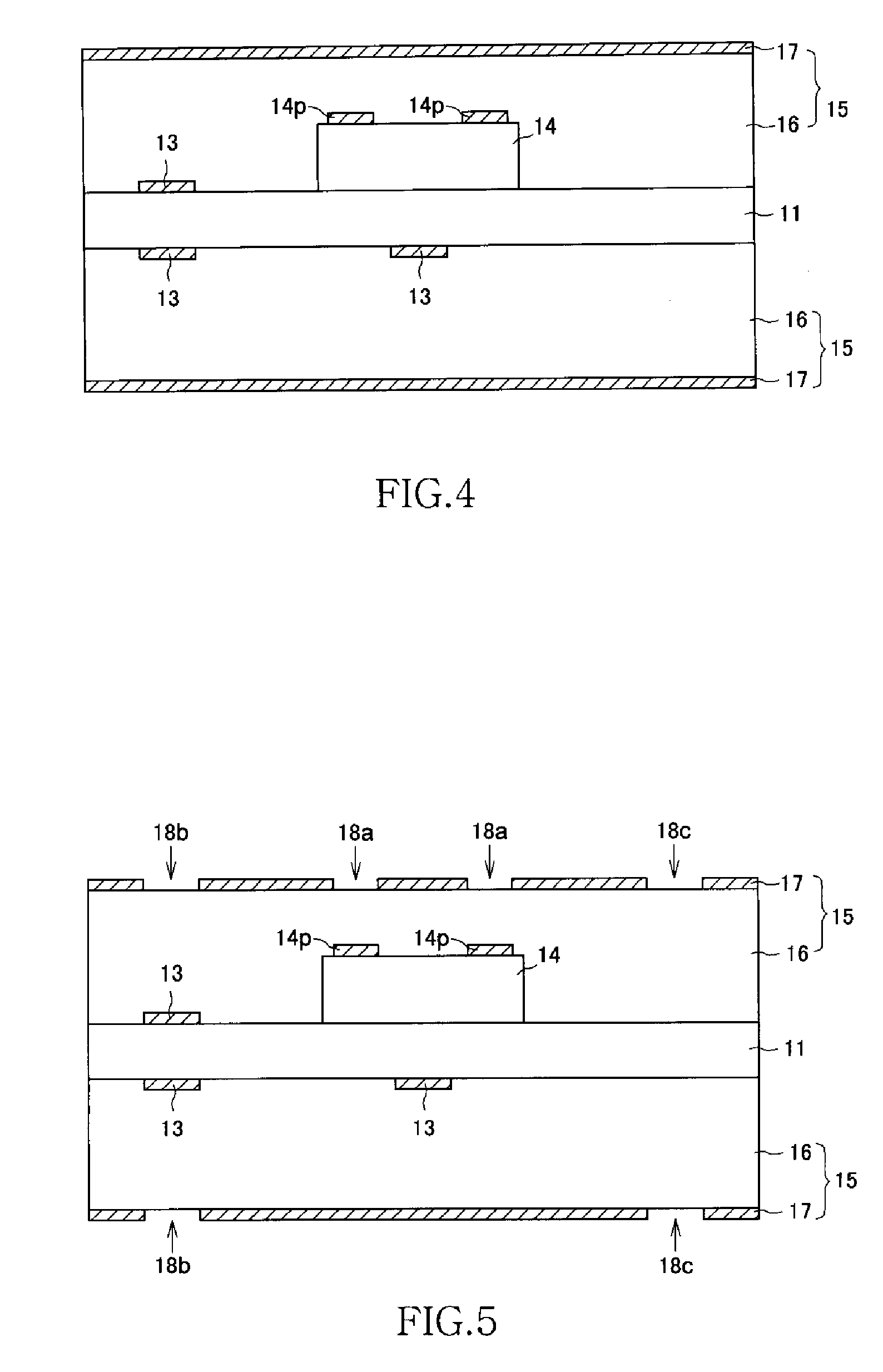Method for manufacturing ic-embedded substrate
a technology of ic-embedded substrates and manufacturing methods, which is applied in the direction of etching metal masks, conductive pattern formation, lithographic masks, etc., can solve the problems of high precision of processing, high yield, and damage to semiconductor ic chips, so as to achieve the effect of increasing reducing the number of processing holes, and not reducing productivity
- Summary
- Abstract
- Description
- Claims
- Application Information
AI Technical Summary
Benefits of technology
Problems solved by technology
Method used
Image
Examples
first embodiment
[0035] The method for manufacturing an IC-embedded substrate according to the present embodiment can be used when a semiconductor IC chip is to be mounted on a “core substrate” that constitutes an IC-embedded substrate; or when a semiconductor IC chip is to be mounted on a “build-up layer” formed on a core substrate. First, a first embodiment in which a semiconductor IC chip is mounted on a core substrate will be described in detail with reference to FIGS. 1 to 9.
[0036] First, a core substrate 11 is prepared when an IC-embeded substrate is manufactured according to the present embodiment (FIG. 1). The core substrate 11 serves to preserve the mechanical strength of the entire IC-embedded substrate. There are no particular limitations thereto; for example, a resin substrate having a copper foil on either side thereof can be used. The material used for the resin substrate is preferably a core material comprising a glass cloth, Kevlar material, aramid, a cloth made from a liquid crystal...
third embodiment
[0060] Next, the present invention will be described in detail.
[0061] In the method for manufacturing an IC-embedded substrate according to the present embodiment, first, a core substrate 11 is prepared in the same manner as in the first embodiment described above (FIG. 11), and a copper foil 12 disposed on either side of the core substrate 11 is selectively removed by photolithography and etching, whereby a conductor pattern 13 comprising wiring and lands is formed on the core substrate 11 (FIG. 2). Next, a semiconductor IC chip 14 is mounted face up in a prescribed region on the core substrate 11 (FIG. 3), and resin sheets 15 having a copper foil on one side thereof are affixed to either side of the core substrate 11 on which the semiconductor IC chip 14 has been mounted (FIG. 4). Thus, the copper foil 17 formed on the surface of the build-up layer is selectively removed by conformal processing, whereby a mask pattern for forming the via holes is formed (FIG. 5). An aperture patte...
PUM
| Property | Measurement | Unit |
|---|---|---|
| thickness | aaaaa | aaaaa |
| thickness | aaaaa | aaaaa |
| diameter | aaaaa | aaaaa |
Abstract
Description
Claims
Application Information
 Login to View More
Login to View More - R&D
- Intellectual Property
- Life Sciences
- Materials
- Tech Scout
- Unparalleled Data Quality
- Higher Quality Content
- 60% Fewer Hallucinations
Browse by: Latest US Patents, China's latest patents, Technical Efficacy Thesaurus, Application Domain, Technology Topic, Popular Technical Reports.
© 2025 PatSnap. All rights reserved.Legal|Privacy policy|Modern Slavery Act Transparency Statement|Sitemap|About US| Contact US: help@patsnap.com



